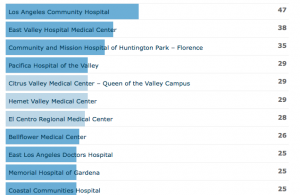September 11, 2010
Putting the tools in the hands of women: Two new cesarean resources
By: Amy M. Romano, RN,CNM | 0 Comments
Whether a woman is having her first baby or has already given birth, whether she is sitting in a prenatal appointment or in the midst of labor, if she is pregnant in the United States, there's at least a 1 in 3 chance she will find herself hearing some version of the words, 'You are going to need a c-section.'
Sometimes those words are spoken and heard with clear knowledge that cesarean is the only reasonable and safe option - a complete placenta previa or severe fetal distress in labor, for instance. But does every woman who hears these words really need a cesarean? What if it's a labor that seems to be going nowhere, or a fetal heart rate pattern that is not entirely reassuring, or something in the woman's medical history that increases her risk slightly?
In these gray area cases, non-medical factors tend to influence decision-making. On the doctor or hospital side, it may be fear of malpractice, financial incentives, protocols, or impatience. On the woman's side it could be her knowledge and values, her plans for future pregnancies, her own tolerance for risk, and her physical condition and support network that may profoundly affect postoperative recovery.
All 'nonmedical factors' are not alike, however. Evidence suggests that factors on the physician and hospital side are exerting a much stronger influence than factors on the woman's side.
How to correct this imbalance? Enter two new woman-centered tools to assist decision-making around cesareans. I'm honored to have been involved in the development of both.

Just launched is a new resource from California Watch, a project of the Center for Investigative Journalism. California Watch conducted an independent review of birth records from California hospitals and showed for the first time that for-profit hospitals have significantly higher c-section rates than not-for-profit hospitals, even when they are serving similar populations. As a companion to a powerful article that explains the findings, California Watch produced a set of 'React and Act' tools that are available on their web site, including an open-access database of hospital c-section rates and related outcomes, an expert Q&A (with yours truly as the featured expert), and downloadable primers in English and Spanish for women to print and bring with them to their care provider's office, childbirth class, or hospital tour.

Also, if you haven't already heard, Lamaze launched another consumer primer earlier this week. A Woman's Guide to VBAC: Navigating the NIH Consensus Recommendations addresses the most common and pressing questions women face when considering or planning a VBAC and all of the content is derived from the NIH Consensus Conference that was held last spring. It breaks down into understandable language the pros and cons of planned VBAC and planned repeat cesarean, how to make sense of prediction models and candidacy for VBAC, how the risks of VBAC stack up to other obstetric risks, the history of hospital 'VBAC bans' and how to challenge them, the critical gaps in the research and how to make choices in spite of them, how to discuss options with a care provider, women's legal rights and protections, and how to take action to improve VBAC access at the community level. (This resource is web-only for now, but we hope to have printed or print-friendly versions available very soon.)
Please pass these important tools to women and I'd love to hear from readers about how they can be incorporated into childbirth classes.
Tags
Childbirth education Cesarean VBAC Professional Resources Practice Variation Transparency